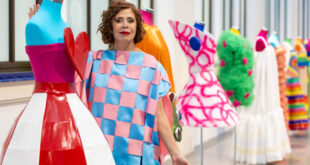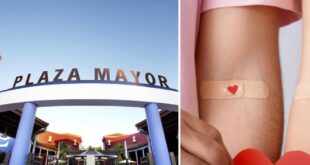SEMANA SANTA in Spain was unlike anything this Kiwi girl experienced before. Malaga is the epicenter of Spain’s Easter celebrations. I drove there to witness the Maundy Thursday festivities.
The Spanish Foreign League, which accompanied the statue Jesus, arrived that morning at the port of Malaga to take part in Cristo de la buena muerte.
After grabbing a scoop of lemon cheesecake ice cream, I headed out to search for a procession in the late afternoon. I followed the beats of drums and bugles, playing music specially composed for the occasion. I passed families seated on camp chairs playing cards together – it looked like they’d claimed the front-row seats several hours ago and I was impressed they had waited so long for the Processions.
READ MORE Unearthed: Fascinating 1960s drawings of Sevilla’s ‘Semana Santa’ by famed British cartoonist William ‘Bill’ Papas


The scene before me, which was completely covered with only the darkest of eyes showing through the fabric covering the face, was quite spooky. Then I saw someone take a drink of water while wearing a mask. The sun had emerged from the clouds in the Spring afternoon and warmed the city.
Many of the people wearing the capirotes resembled gnomes, and appeared to have been young children participating in centuries-old cultural and religious tradition. The hats are a symbol of the wearer´s desire to be closer to God through penance. The hats symbolise the anonymity and humbleness of the penitent by covering the face. The whole thing was very magical.
In 1487, the first processions were held in Malaga after the arrival of Catholic monarchs and centuries of Muslim influence began to convert to Christianity.
Cofradias began to form when the Catholic Church encouraged worship of idols. In those first processions, ‘brothers of light’ or Nazarenes would walk next to ‘brothers of blood,’ who would be whipping themselves as a mark of self-discipline.
The whipping is a long-forgotten tradition.
When the Unidad Militar de Emergencias marched down the street (the emergency branch in the Spanish Army), the crowds cheered.
Crowds also gathered to support those who were moving through the streets with their pasos. These are elaborately-decorated floats that carry statues of biblical characters and portray scenes from the Passions of Christ and the Virgin Mary.
The first float i saw was a statue depicting a Jesus grimacing and carrying his cross. The float reflected the faces of the people carrying Jesus below, as they shuffled from side to side and could not walk normally because of the weight. The heaviest paso in Mañaga is the Virgen de la Esperanza. The Virgen de la Esperanza, weighing more than 5 000 kgs, is carried by as many as 250 men.
As I watched the float carrying a scene of ´The Last Feast´ steadily move down the street, I spoke with a British family next to me.
When she was younger she used to walk the streets in a procession with her head covered by a pointed velvet cap. Her daughters were shocked to hear that their mother had once been a part of religious traditions. The father from London said that this was the first Semana Santa for his daughters.
The Easter procession was a huge family affair. Tourists from Malaga and other parts of Spain mixed with locals.
Maria and Alberto, who were from Northern Spain, wanted to take advantage of the holiday sun. Last time they saw a procession, it was 15 years before. I asked if they’d ever taken part of the processions themselves and Alberto happily laughed saying he had practised ‘lifting the paso’ at his local gym but that was it.
It was like going back in history when I entered the old city. Brotherhoods dating more than 500 year old shared the same streets. The smoke from the incest and the tall candles carried by some marches wafted through the crowd. People passed were adorned in capirotes in pure white, jet-black and ruby red. The marching bands performed incredible music, which was both sombering and rallying.
The streets were already jammed when I arrived just after four o’clock on Thursday. I was zigzagging my way through the crowds to get to the train to take me home five hours after I arrived.
The processions were so close that it was almost impossible to see them. I was surprised at the number of people who remained standing and watched, seemingly happy just to be present during the Holy Week celebrations.


Easter weekend is a little different in New Zealand. Many people who attend church are religious. Many people who aren’t religious will spend the extra long weekend with their family and friends and snack on hot cross buns and chocolate easter eggs.
In my Spanish hometown of Estepona I participated in the Sabado celebration, where a moving recreation of Jesus’ last moments before being put on trial and crucified was performed down the cobbled town streets.
There was no tourist around as the play was performed in Spanish. I and another Kiwi couple, who had recently moved to the opposite side of the globe, were the only ones in the audience. It felt like a truly special moment to be a part of, as ‘disciples’ donned in Mediterranean garb jostled past us to play their next scene.
READ MORE
 Costa News Spain Breaking News | English News in Spain.
Costa News Spain Breaking News | English News in Spain.




